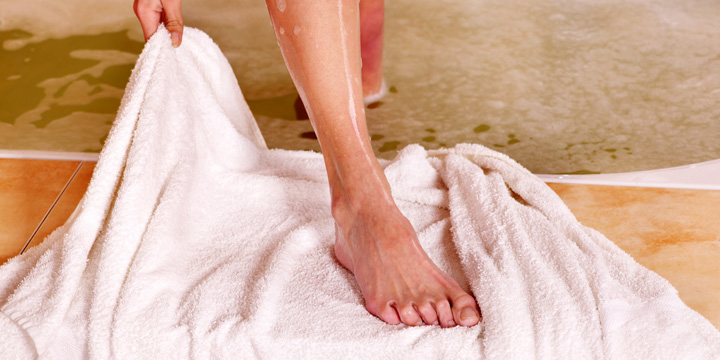
Your skin is the largest organ in your body. Just like other organs (for example, your kidneys or heart), it can be affected by diabetes. That’s why it’s important to have a proper skin care regimen. Read on to learn more about skin care for people with diabetes.
Is skin care any different for people with diabetes?
People with diabetes have a higher risk of skin issues – such as infections and wounds – than those who don’t have the condition. In particular, prolonged high blood sugar levels can lead to poor circulation, which may also affect your skin. That’s why it is important that you practice good skin care techniques every day.
Tips for daily skin care
Follow these tips to ensure that you maintain healthy skin:
- Use a soap that has no added perfume or scent. These types of soaps can irritate your skin.
- This is especially important for your face, so choose a gentle, unscented facial cleanser for use here as well.
- When bathing or showering, make sure the water is not too hot. This can dry out your skin. As well, if you have neuropathy, you may not notice if the water is too hot and suffer skin damage.
- After bathing or showering, dry your skin thoroughly – especially your feet, between your toes and in skin folds (such as your groin, neck and armpits). If water stays in these areas, it can lead to skin infection.

- Use a gentle moisturizing cream or ointment on your body at least once a day. It’s a good idea to do this after you shower or bathe. Keeping your skin moisturized helps to make it flexible and prevent cracks that often lead to infection (this is especially important for your feet). Avoid using cream or lotion between the toes.
- Always carry a container of cream or ointment with you so that you can apply it any time your skin feels dry or itchy.
- Keep your blood sugar levels in their target range. This is helpful for preventing and healing wounds, scar tissue and sunburns.
- To protect your hands, wear gloves when you do household chores and when you’re gardening or doing yard work.
- Check your feet every day for any signs of discoloration, swelling, scratches, blisters or sores. People with diabetes are especially prone to foot issues, so if you see any of the signs listed above be sure to contact your healthcare team immediately.
Tips for seasonal skin care
Beyond the general skin care tips noted above, there are some things you can do in the summer and winter months to ensure that your skin stays healthy.
Summer
High temperatures and humidity in the summertime can lead to skin issues, so follow these tips for healthy skin in the summer.
- Be sure to drink plenty of fluids throughout the day to stay hydrated. It’s good for your skin and for your whole body. Choose water more often than fruit juice or soft drinks.

- Wear light-coloured, long-sleeved shirts and pants, and a wide-brimmed hat made from breathable fabric, to protect your face and body.
- Always use sunscreen, even when it’s cloudy outside. Choose a sunscreen that is labelled “broad spectrum” and “water resistant” with an SPF of at least 30.
- Limit your time in the sun, especially at midday, when the sun’s rays are at their strongest.
Winter
Cold temperatures and dry air in the wintertime can lead to skin issues, so follow these tips for healthy skin in the winter.
- Dry winter air can cause your skin to dry and crack more easily. Applying moisturizer even more often than in other seasons is important to prevent this from happening.
- Don’t forget about your lips! During the winter months they are far more prone to drying out and chapping. Always carry a tube or pot of lip balm with you, and apply it regularly.
- Use a home humidifier during cold winter months. Be sure to clean the machine regularly to prevent it from clogging and to prevent bacteria and mold from forming.
Protecting your skin is an important part of your diabetes management routine. Follow these daily and seasonal tips to ensure your skin is well cared for.


